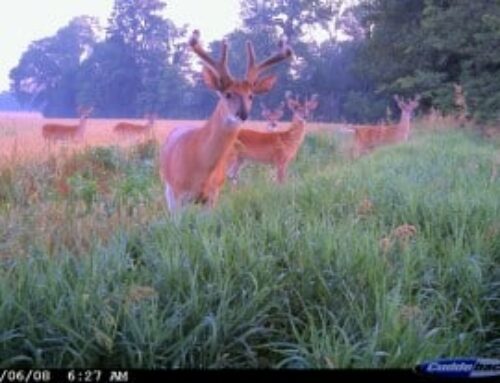
Mule deer went through tough times in the 1990s, and populations declined in many areas. More than 20 years later most people still think mule deer numbers are down, “but actually there’s good news,” said Jim. “Mule deer populations have been trending up, and are stable or increasing slightly in most states.”
Jim pointed to Utah, Idaho and California as bright spots, with herds on the slight rise. But he did acknowledge that the winter of 2016 was brutal in parts of Colorado, Wyoming and Montana, where there should be a “little dip” in deer numbers this year.
In the West, mule deer face unique challenges, such as expanded housing, energy and road development in herds’ migration routes and wintering areas; limited and changing water supplies; and changes in habitat and food sources. Major predators of the mule deer are the coyote (on fawns) and mountain lion.
Jim is particularly positive about the herds and the number of big, mature bucks in his home state of Arizona. “The big bucks are here in any given year.” Arizona manages their mule deer so conservatively—drawing a tag is tough—that there are always big deer on public ground. Also expect lots of huge public-land bucks this fall next door in New Mexico, where again pulling a tag is the biggest challenge.





